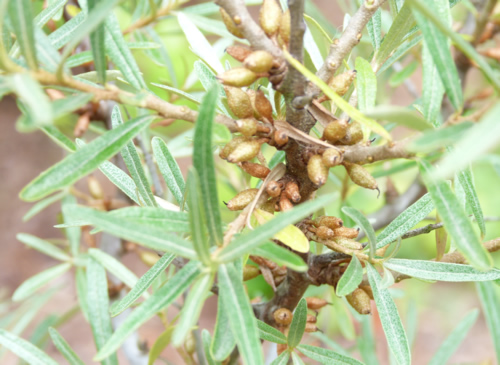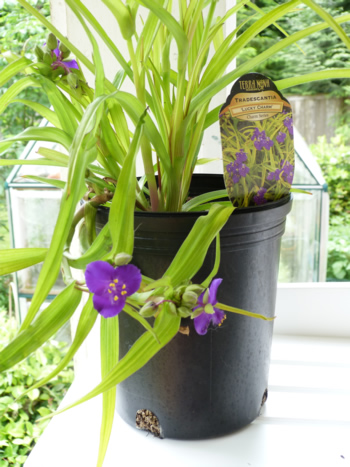I hit the jackpot at the nursery because they also had sea buckthorn, mostly female plants and one lonely male. Well, he won't be lonely any more because I brought him home with a couple of his lady friends. There will be some fruit by the end of summer so this is called jump start. The seeds are going to take five years to mature to this point, but they will get a lot of TLC between now and then.
The nursery had these plants in the section with the blueberries and, this being a little Viking town, the lingon berries. I planted those last year along with some Himalayan blueberries. We are going need our flavonoids!
If you happen to be a place with a bit higher consciousness, like Portland, Oregon, your choices are just amazing:
http://www.onegreenworld.com//index.php?cPath=4
Two months ago when Kathrin Bateman told me about that nursery, they had pictures of many varieties and I was creating a wish list and trying to figure out how to drive there with Savika and not trash the plants. Our rural nursery had the variety called Leikora.
There is a whole blog dedicated to sea buckthorn:
http://www.seabuckthorn.net/index.php/?p=126
There are also some pdfs, rather a lot of them, but here are some starters:
http://www.underutilized-species.org/species/brochures/Seabuckthorn.pdf
http://www.agf.gov.bc.ca/speccrop/publications/documents/seabuckthorn_may2001.pdf
This is a good exercise for me because just a few hours ago I was asking myself where my responsibilities to the Planet begin and end. The answer I got was that lots and lots and lots of us are working together (and independently) to solve the challenges here so I can specialize. I'm so glad others have done the sea buckthorn homework.

If you forgot why I am urging you to plant these, it is because plants have properties that protect us from the side effects of various exposures. Some act as antioxidants and some help us to repair damaged DNA or tissue that has been irritated by radiation, pollutants, and so on and so forth.
Dr. Hiranuma and I are spending hours every day on the side effects of the radiation. You can help. One person wrote that Pocono was available in Austin, TX. See! The day after she said that, I happened to be studying the inventory in our supermarket and the chap in charge of cereals was shelving some items. I mentioned that he needed to add Pocono and he looked at my geiger counter, suggested I visit the bananas, and made a note to himself to order Pocono. It might be that simple, but how about some recipes? One reader asked if buckwheat sprouts would be effective. I doubt it, but kasha might work and I bet some of you have some tasty kasha recipes!
While I am nudging and nagging, let's get serious about cilantro. I planted it in the greenhouse a few days ago and it's germinating. One of the symptoms being widely reported in Japan is a metallic taste in the mouth. I actually had this three or four times recently and I went through two ounces of cilantro extract. It works very quickly for me, but I don't have any amalgams so it's quite safe for me to eat cilantro now. One of the worst cases I saw in Switzerland was a patient from Spain with amalgams. Her sister had different symptoms but was also ill. Both had amalgams and both used cilantro in cooking. This is a no no and the same goes for that cilantro chutney in India and Pakistan. It's delicious but it's dangerous to eat if you have a mouth full of metal. However, unlike buckwheat, cilantro/coriander sprouts ought to be highly effective.
At the risk of annoying a few people, I might be one of the only people still placating those on dial up by not attaching pictures to my posts. I really want to add photos so if you have high speed internet, please modify your subscription (using the link below) to indicate a preference for html (web) format. There was a lot of response to yesterday's post and it is online now:
http://ingridnaiman.com/subscription_posts/bioethika_emails/ethical_concerns/genie_bottle.html
Many blessings,
Ingrid
|
![]()

